How To Learn Morse Code?
Morse Code is a communication method using dots (.) and dashes (-) to represent text. You can Decode Morse Code or Encode any text with our Morse Code translator.
Convert images, audio, or text to Morse code, or decode Morse code into text in multiple languages. Learn International Morse code alphabets with audio playback. Just type letters, numbers, or punctuation into the input box and instantly get Morse code with audio playback. This Morse Code Translator lets you decode with standard dots and dashes. Morse code was widely used in the United States, the United Kingdom, and many other countries around the world, especially for military communication, aviation, and emergency signaling.
Click on any character to hear its Morse code sound. The dots () and dashes () represent the signal timing. Developed in the 1830s and 1840s by Samuel Morse and Alfred Vail, this system was designed to allow long-distance communication over telegraph lines, using sound or light signals to transmit information.
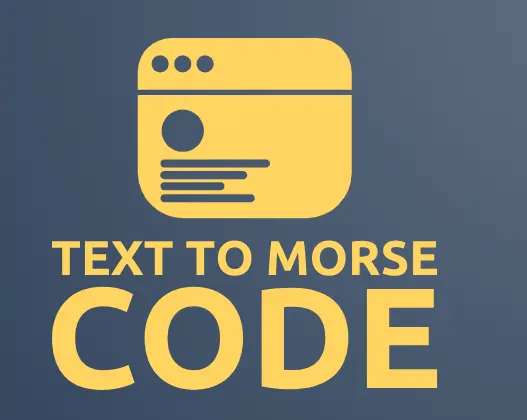
TexttoMorseCode.com is a versatile online tool for encoding and decoding International Morse code. Users can input text (letters, numbers, punctuation) and see the corresponding Morse translation—or vice versa by typing in dots and dashes. This translation tool follows international standards of converting your text into Morse Code.
We offer two-way translation between Morse code and various alphabets, including Latin, Hebrew, Arabic, and Cyrillic, by letting users input text or Morse using dots () and dashes (. It supports playback of Morse as sound, flashing light, or vibration, with full control over speed, pitch, frequency, and volume.
This is an excellent morse code generator tool to send secret messages, learn Morse code, or explore historical communication methods.
Whether you are looking to use a Morse Code Generator to create messages or a Morse Code Decoder to decipher existing Morse code, this tool is excellent free online source for you because it not translate only english alphabets but also support other langauges.
Translate text to Morse code and Morse code to text in different languages like Latin, Hebrew, Arabic, and Cyrillic. You can also play the Morse code sound or download it. By simply entering text, the tool instantly translates it into Morse code. Kindly select the perfect translation option according to your desired input and output, otherwise, you will get nothing or a wrong translation. Input box is the same for morse code and Text input, but select the above dropdown button perfectly.
Type or paste the text in the input box. After that, our code quickly converts your audio to Morse code.
See the preview of Morse code on the right side, or click on the play button to listen to the results in audio.
You can also convert Morse Code to text. Just input the text in the right input box and preview the results on the left side.
Our Morse Code Translator is a powerful tool that allows you to seamlessly translate between text and Morse code. Whether you're encoding text into Morse code or decoding Morse code back into readable text, this translator follows international standards to ensure accuracy. The Text to Morse Code Encoder lets you easily convert any text into Morse code, with additional features that allow you to play the code and adjust advanced settings for customization. Similarly, the Morse Code to Text Generator offers real-time conversion, accurately turning Morse code into simple, readable text for efficient communication and learning.
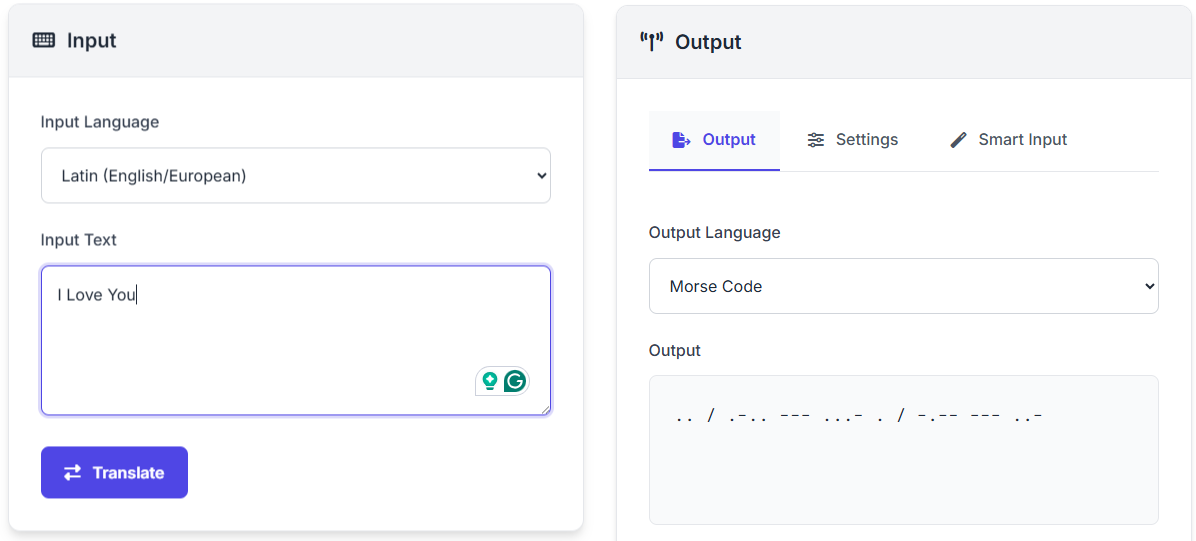
Type any letters, numbers, or punctuation in the top input box. Our tool will show the Morse code in the right box. You can play the generated Morse Code and save it as a text file. If you want to learn Morse code, try the Pratice Tools. Customize the results in setting, use flash or vibrate features, and also allows you to add the Morse Code using its smart input section.
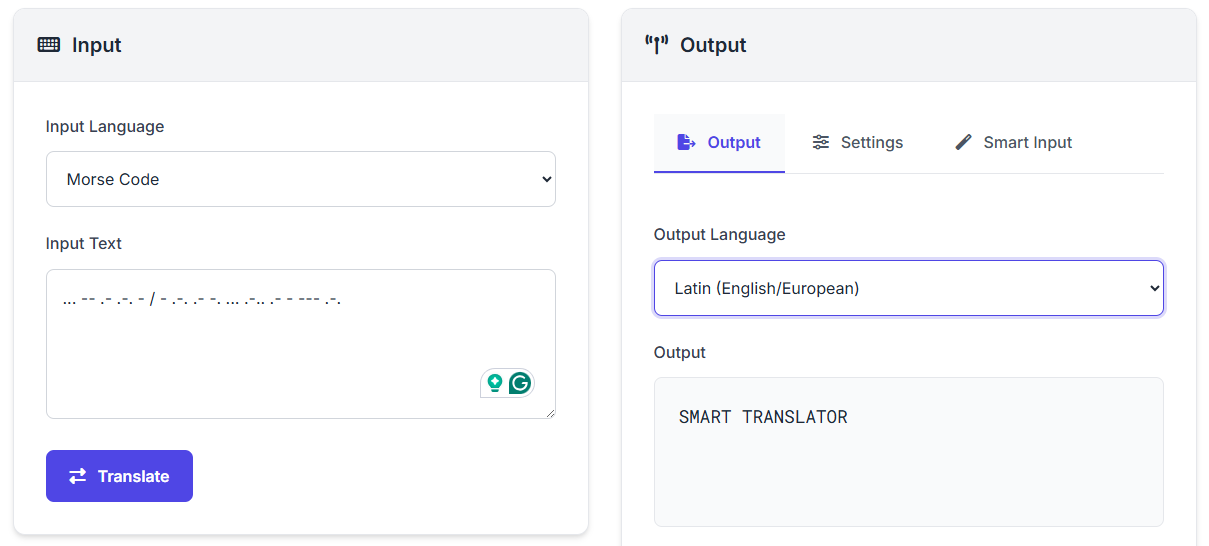
To convert Morse code to text, type the Morse code into the right input box and select "Morse Code" from the dropdown menu. Then, choose the target language option such as English, Latin, Hebrew, Arabic, or Cyrillic in the left box. Once selected, the translation will happen instantly.
Easily convert your audio recordings into Morse code and readable text by uploading a file in our Morse Code Audio Translator. Once converted, review the results and copy either the Morse code or plain text as needed.
Use the Play button to listen to the audio of your generated Morse code. You can also enable the Flash option to create light signals based on your Morse code output. Additionally, a Vibrate feature is available for mobile devices.
Whether you're looking to use a Morse Code Generator to create messages or a Morse Code Generator to decipher existing Morse code, this plugin makes it easy and fun. It provides a user-friendly interface for translating messages between Morse code and readable text, making it a perfect choice for learners, hobbyists, and enthusiasts.
S = · · · O = — — — SOS = · · · — — — · · ·
"SOS" = ··· ——— ···
Tip: Dot = “·”, Dash = “—”. SOS is three short, three long, three short.
I = · · L = · — · · O = — — — V = · · · — E = · Y = — · — — O = — — — U = · · —
"I Love You" = ·· ·—·· ——— ···— · —·—— ——— ··—
Tip: Dot = “·”, Dash = “—”. Separate letters with spaces, words with double spaces.
H = · · · · E = · L = · — · · L = · — · · O = — — —
"HELLO" = ···· · ·—·· ·—·· ———
Tip: Dot = “·”, Dash = “—”. Separate letters with spaces, words with double spaces.
H = · · · · E = · L = · — · · P = · — — · M = — — E = ·
"HELP ME" = ···· · ·—·· ·——· —— ·
Tip: Dot = “·”, Dash = “—”. Spaces separate letters, and double spaces separate words.
Morse code is a method used in telecommunication to encode text characters as standardized sequences of two different signal durations, called dots and dashes.
• The dot duration is the basic unit of time measurement.
– A dash is three times the duration of a dot.
• Each dot or dash is followed by a short silence, equal to the dot duration.
– Letters are separated by a space equal to three dots.
– Words are separated by a space equal to seven dots.
Morse code was developed by Samuel F. B. Morse and his assistant Alfred Vail in the 1830s and 1840s. While Morse conceived the idea of the electric telegraph, Vail was instrumental in creating the system of dots and dashes that represent letters and numbers, which became the language of the telegraph. 📜
Understanding Morse code involves learning to recognize patterns of short signals (dots or "dits") and long signals (dashes or "dahs"). Each letter, number, and punctuation mark has a unique sequence. The key is to listen to the rhythm, not to count the dits and dahs. For example, the letter "A" is a short "dit" followed by a long "dah" (·−), while "B" is a "dah" followed by three "dits" (−···). People often learn by using mnemonic devices or charts.
You can translate Morse code in a few ways:
Morse code was invented to be the language for the electric telegraph. Before the telegraph, long-distance communication was limited to the speed of a horse or a train. The telegraph, invented by Samuel Morse, could send electrical pulses over a wire almost instantly. Morse code provided a standardized way to convert letters and numbers into these electrical signals, revolutionizing long-distance communication. 💡
Yes, though it's not a primary method of communication anymore. Its main users today are:
Morse code works by representing characters as sequences of short and long signals, called dots (dits) and dashes (dahs). These signals can be transmitted using sound, light, or electrical pulses. The system is based on timing rules:
This precise timing allows a listener to distinguish between different letters and words.
To say "yes" in Morse code, you spell out each letter:
So, "yes" is: −·−− · ···
In the slang of early telegraph operators, specific numbers were used as shorthand. For "love and kisses," the common abbreviation is the number 88.
So, "love and kisses" is often sent as: −−−·· −−−·· ❤️
SOS is the international distress signal. It's a special case where the letters are run together without the normal pause between them to create one distinct and urgent sound.
The sequence is sent as a continuous string: ···−−−···
Our Morse Code Translator supports multiple alphabets including Latin (English/European), Cyrillic (Russian), Hebrew, and Arabic. You can translate text from any of these languages into Morse code, or convert Morse code back into text in your preferred language. This makes it useful for international communication and learning different writing systems.
To convert Morse code, select "Morse Code" from the input language dropdown, then paste or type your Morse code in the input box using dots (.) and dashes (-). Choose your desired output language (Latin, Cyrillic, Hebrew, or Arabic) and click translate. The converted text will appear in the output section. Make sure to use proper spacing between letters and words for accurate translation.
Yes, the translator includes save and share functionality. You can save your translations as a text file by clicking the "Save as Text File" button. You can also generate a shareable link that contains your translation, making it easy to share with others. The download will include both the original text and the Morse code translation.
Yes, our translator follows international Morse code standards to ensure accuracy. It correctly translates all letters (A-Z), numbers (0-9), and common punctuation marks. The translation is based on the International Morse Code standard, which is used worldwide by amateur radio operators, maritime services, and aviation. The audio timing and spacing also follow proper Morse code conventions.
Yes, the Smart Input section includes an audio recording feature that can detect Morse code from your microphone input. Click the "Record Morse Audio" button to start recording, then tap or speak your Morse code pattern. The system will attempt to convert the audio and convert it to text. This feature is experimental and works best in quiet environments with clear audio input.
Yes, this translator is an excellent learning tool! It includes several features designed for education: adjustable speed settings to learn at your own pace, visual and audio feedback, interactive input buttons, real-time preview, and a comprehensive reference chart showing all letters, numbers, and punctuation. Start with slower speeds and gradually increase as you become more comfortable. The Smart Input feature is particularly helpful for beginners to practice inputting Morse code correctly.
TextToMorseCode.com not only converts text to Morse code and vice versa, but also converts audio Morse code to text, image Morse code to text, and provides learning tutorials to enhance your learning journey. Below, select a post to explore the features.
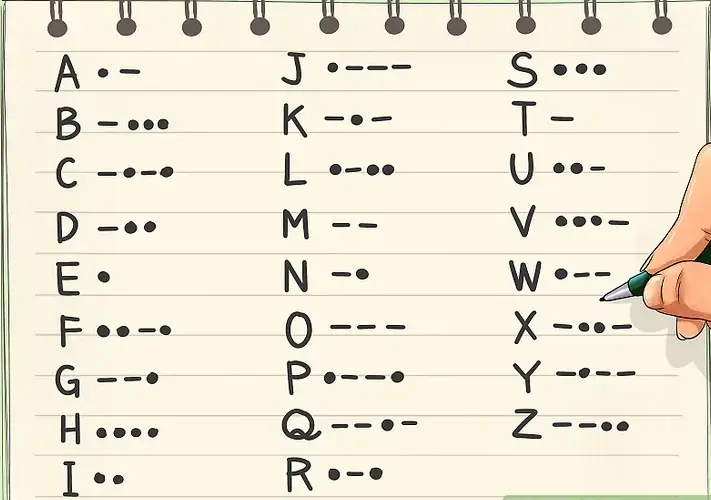
Morse Code is a communication method using dots (.) and dashes (-) to represent text. You can Decode Morse Code or Encode any text with our Morse Code translator.

Convert your audio file to Morse code and readable text by simply uploading an audio recording. Review the converted audio file, then copy the Morse code or the plain text.
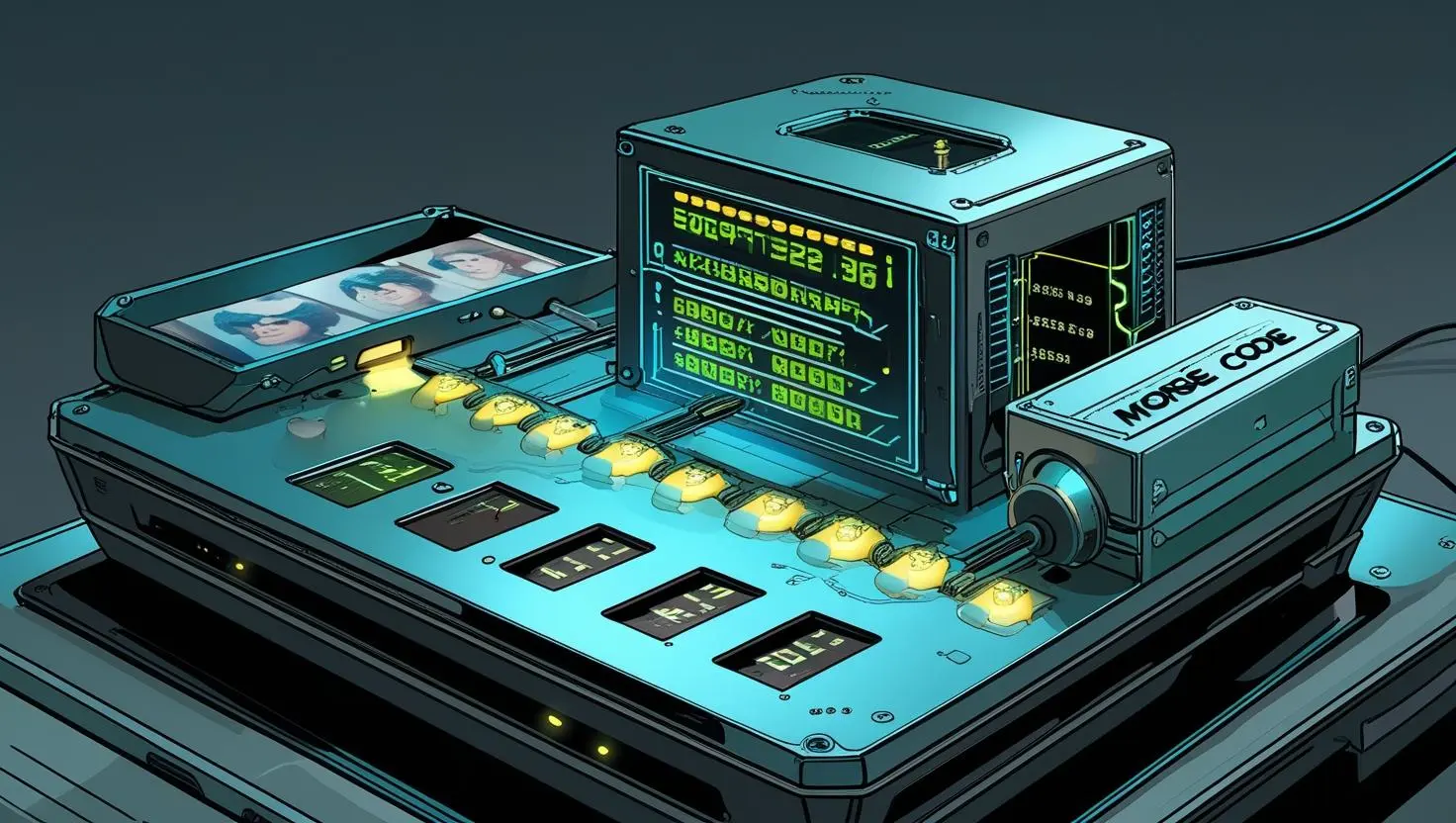
Translate text from images and photos to Morse Code effortlessly. Simply upload your image and get a translation of your uploaded image text to more code.